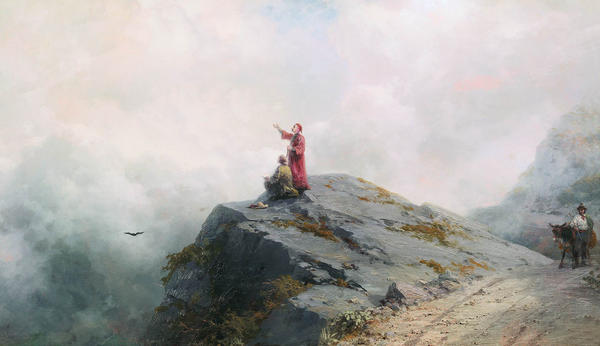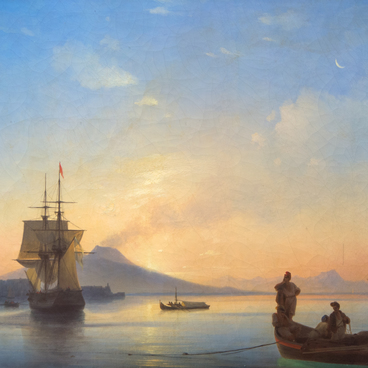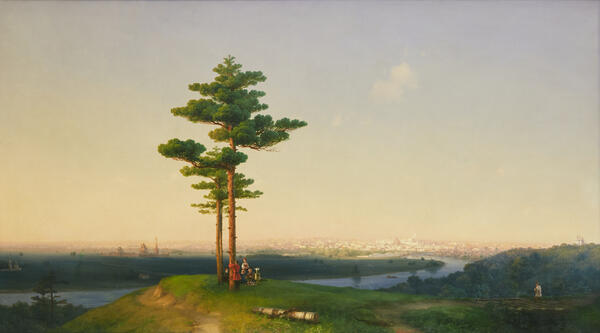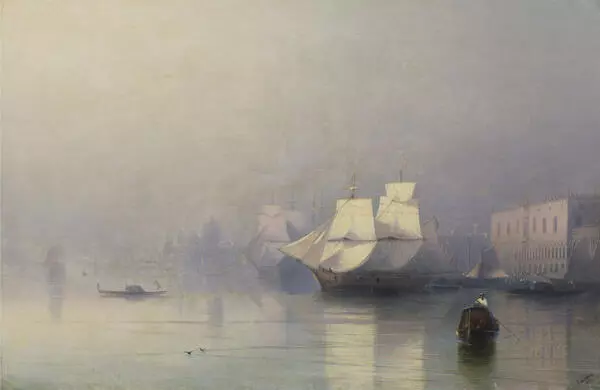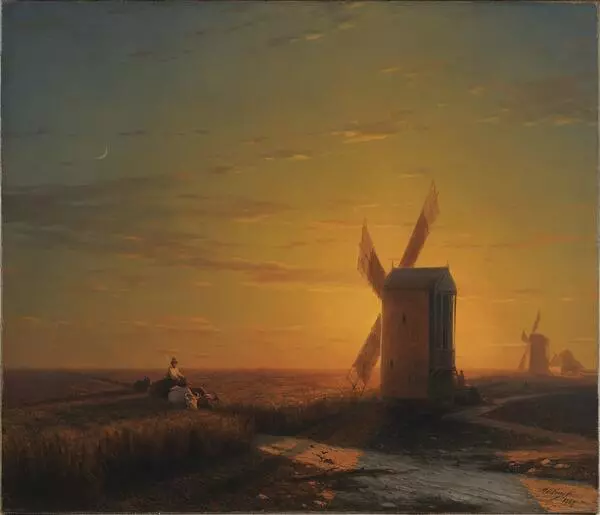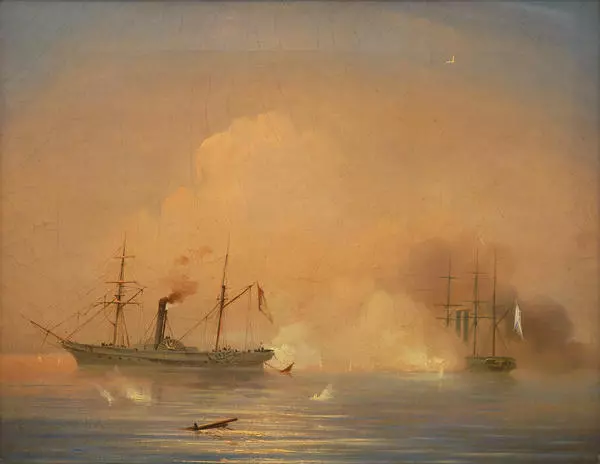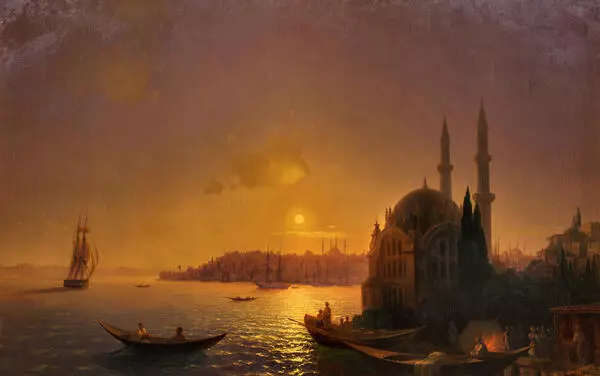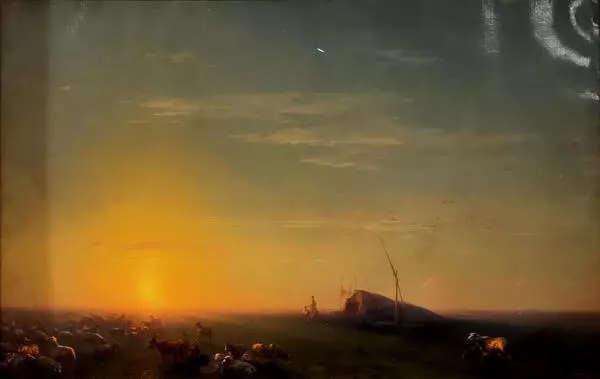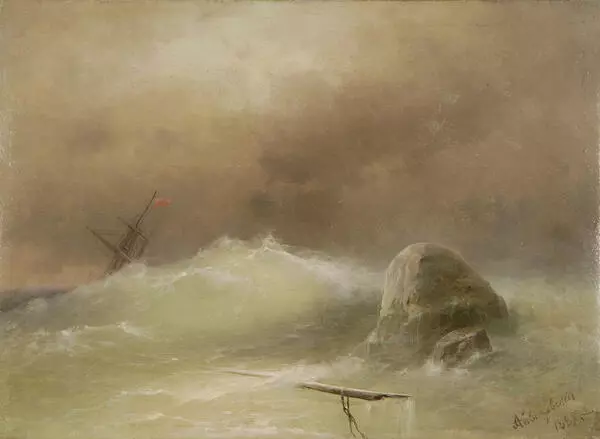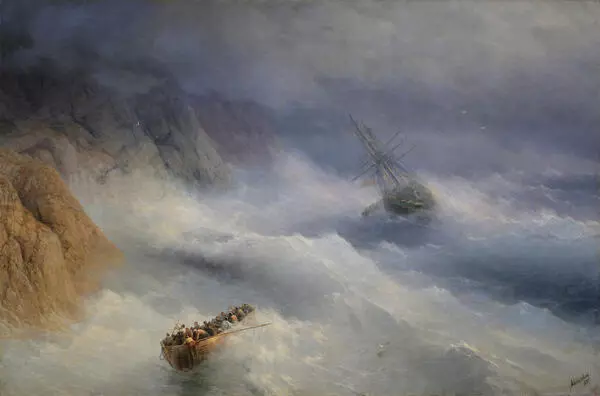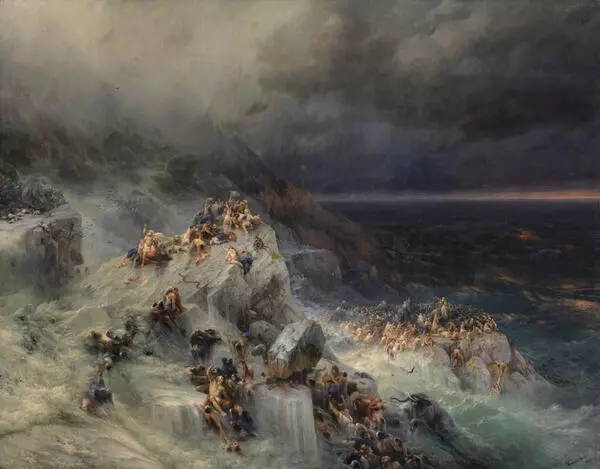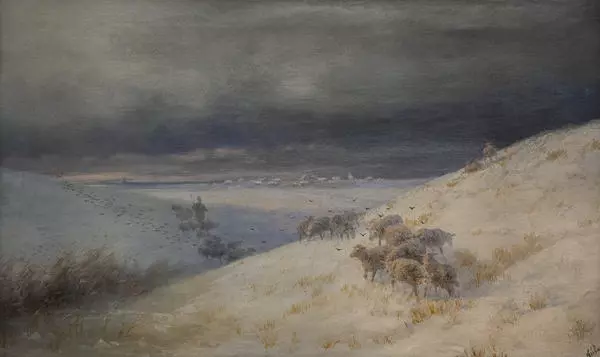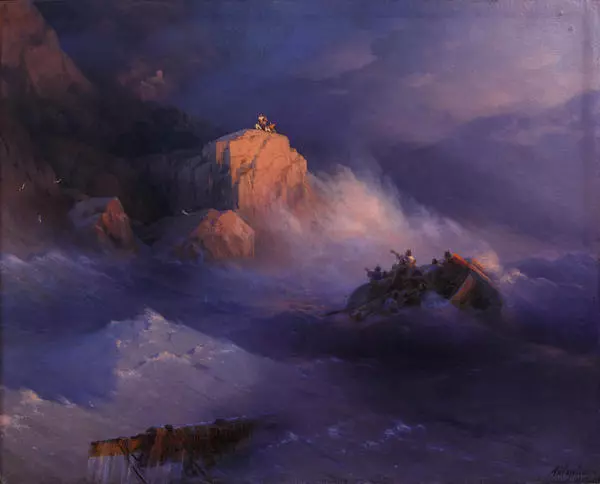Ivan Aivazovsky’s artistic life was incredibly full and long spanning a truly huge period of time, 63 years, — from infatuation with Romanticism in his youth to a profoundly realistic art. Dante and an Artist in the Mountains stands apart in Aivazovsky’s art. Many of those who study his art do not hold it among his best works, but they do so without due regard to the question of why the artist turned to the theme in his sunset years. He might have been charmed by Dante’s verses suggesting a picture like this to him, or the theme might have been prompted by his reminiscences of Italy’s beautiful nature that he had been enchanted with back in his youth.
For artists of Aivazovsky’s generation, Rome was a promised land. Silvester Schedrin painted his intimate landscapes there, Orest Kiprensky worked there, and Karl Bryullov’s fame flourished there. All of them had an important role to play in young Aivazovsky’s development as an artist. In the autumn of 1840, Aivazovsky went on his first study tour abroad. He worked in Rome, Naples, Sorrento, and Venice.
It was in Italy that his European fame began. Despite Aivazovsky’s fairly young age, he was soon accepted and appreciated in Rome’s artistic milieu. He had close ties with author Nikolay Gogol and artist Alexander Ivanov. The latter was an ardent supporter of his painting and said that “no one here paints water as well as Aivazovsky”. The few years spent abroad made Aivazovsky a first-class master. Since that time Italy’s exuberant nature had never relaxed its grip on the artist — during his whole life, he regularly returned to its images.
The artist had always been attracted by the image of Dante. Usually, Dante and an Artist in the Mountains is perceived as an illustration to the poet’s philosophical thoughts. Dante is showing the artist unusual clouds in front of them. Aivazovsky’s masterfully depicted the clouds, their beauty and awesome rapid movement which the artist interpreted as the metaphor of destiny. During that period of his life, Aivazovsky, not infrequently, turned to the genres that were not natural to him and was given to existential thoughts.
In the last year of his life, the artist began to plan a trip to Italy. He wrote: ‘It is my firm decision to go to Italy this year, and now I dream of this trip to Rome and Naples where I am going to spend some three months in autumn and in winter. It was there that in 1841 my European fame began, and now, 58 years later, I hope to work there like in 1841 when I was young and full of hopes, but will I be able to surprise Neapolitans (i.e. their grandchildren) as I did then’. The trip, however, never happened.
For artists of Aivazovsky’s generation, Rome was a promised land. Silvester Schedrin painted his intimate landscapes there, Orest Kiprensky worked there, and Karl Bryullov’s fame flourished there. All of them had an important role to play in young Aivazovsky’s development as an artist. In the autumn of 1840, Aivazovsky went on his first study tour abroad. He worked in Rome, Naples, Sorrento, and Venice.
It was in Italy that his European fame began. Despite Aivazovsky’s fairly young age, he was soon accepted and appreciated in Rome’s artistic milieu. He had close ties with author Nikolay Gogol and artist Alexander Ivanov. The latter was an ardent supporter of his painting and said that “no one here paints water as well as Aivazovsky”. The few years spent abroad made Aivazovsky a first-class master. Since that time Italy’s exuberant nature had never relaxed its grip on the artist — during his whole life, he regularly returned to its images.
The artist had always been attracted by the image of Dante. Usually, Dante and an Artist in the Mountains is perceived as an illustration to the poet’s philosophical thoughts. Dante is showing the artist unusual clouds in front of them. Aivazovsky’s masterfully depicted the clouds, their beauty and awesome rapid movement which the artist interpreted as the metaphor of destiny. During that period of his life, Aivazovsky, not infrequently, turned to the genres that were not natural to him and was given to existential thoughts.
In the last year of his life, the artist began to plan a trip to Italy. He wrote: ‘It is my firm decision to go to Italy this year, and now I dream of this trip to Rome and Naples where I am going to spend some three months in autumn and in winter. It was there that in 1841 my European fame began, and now, 58 years later, I hope to work there like in 1841 when I was young and full of hopes, but will I be able to surprise Neapolitans (i.e. their grandchildren) as I did then’. The trip, however, never happened.

